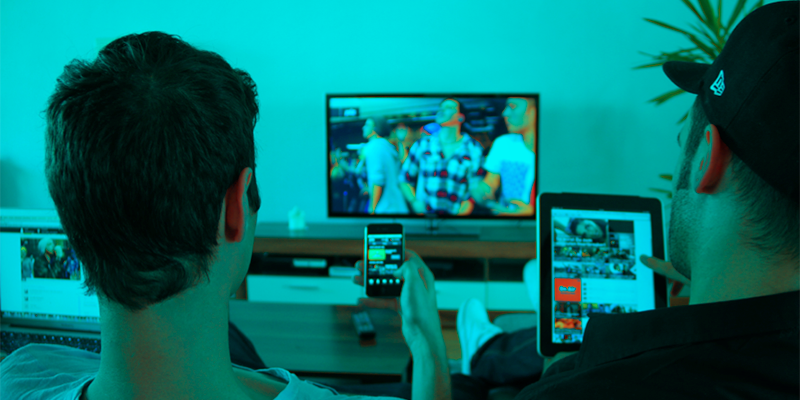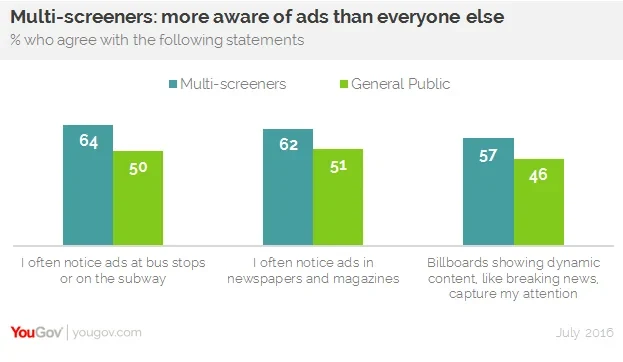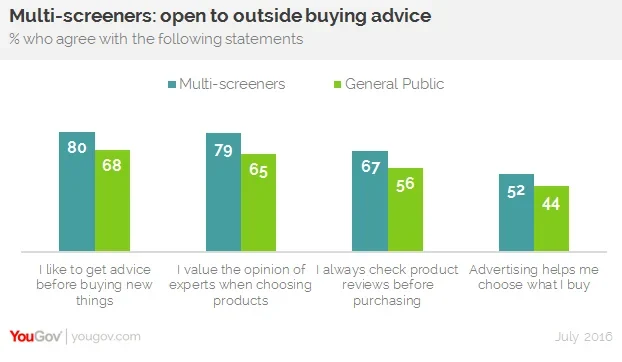
The multi-screeners: observant of ads and in search of buying advice
Data from YouGov Profiles shows that those who text, shop, and browse the web while watching TV aren't as distracted as they might seem
As the New Yorker recently noted, the idea of the lazy, sedated couch potato has all but vanished from today's vocabulary. In 2016, people no longer passively watch TV with remote in hand. Instead, they're viewing programs while sending texts, buying clothes, browsing Wikipedia, and scrolling through their News Feed on Facebook. They're actively multitasking on two or more screens. They're engaged.
Beyond the mere outline of a multi-screener, however, new data from YouGov Profiles can help fill in the colors of this demographic — perhaps revealing some unexpected shades.
Defining the multi-screener as someone who tends to shop online, check social media, browse the interenet, and text with friends or family — all while watching TV — we know this group is about two-thirds female and 50% fall between the ages of 18 and 34. The multi-screener's favorite shows, either streamed or watched live, include Orange Is the New Black, Scandal, The Walking Dead, House of Cards, and The Big Bang Theory. They're also an always-connected bunch, as 88% say the internet is their primary source of information and 70% admit they couldn't get through the day without mobile communication (for the general public, those numbers stand at 71% and 48%, respectively). In total, over 90% of multi-screeners consider themselves either very or fairly internet savvy, while nearly 70% say they're usually up to date with the latest technology.
Although one might be tempted to conclude that multi-screeners are endlessly distracted by a steady stream of emails, alerts, and new links to click, data shows they're actually more observant than the average person when it comes to noticing advertisements. 64%, for example, say they notice ads on public transportation, while that's true for only half of the general public.

Beyond their mere receptiveness to advertising, however, multi-screeners also seem more likely to consider what other people — from peers to experts to strangers online — are saying about a particular product or service before purchasing it. Even ads themselves seem to influence a multi-screener's buying process more than the average person's (52% to 44%).

So, while people who stare at multiple screens tend to get a reputation for being distracted and fickle, data shows they might possess a greater capacity to both consume and process more information than one screen can offer. For the vigilant multi-screener, then, what might come across as too much discordant noise for the typical consumer is actually a harmony of sensible sound.